|
|
Creator | Title | Description | Subject | Date |
| 1 |
 |
Gerig, Guido | Tumor-induced structural radiometric asymmetry in brain images | This paper presents a general framework for analyzing structural and radiometric asymmetry in brain images. In a healthy brain, the left and right hemispheres are largely symmetric across the mid-sagittal plane. Brain tumors may belong to one or both of the following categories: mass-effect, in whic... | | 2001-01-01 |
| 2 |
 |
Gerig, Guido | Multiscale medial shape-based analysis of image objects | Medial representation of a three-dimensional (3-D) object or an ensemble of 3-D objects involves capturing the object interior as a locus of medial atoms, each atom being two vectors of equal length joined at the tail at the medial point. Medial representation has a variety of beneficial properties,... | | 2003-01-01 |
| 3 |
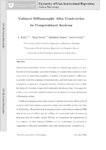 |
Gerig, Guido | Unbiased diffeomorphic atlas construction for computational anatomy | Construction of population atlases is a key issue in medical image analysis, and particularly in brain mapping. Large sets of images are mapped into a common coordinate system to study intra-population variability and inter-population differences, to provide voxel-wise mapping of functional sites, a... | | 2004-01-01 |
| 4 |
 |
Gerig, Guido | Abnormal vessel tortuosity as a marker of treatment response of malignant gliomas: preliminary report | Despite multiple advances in medical imaging, noninvasive monitoring of therapeutic efficacy for malignant gliomas remains problematic. An underutilized observation is that malignancy induces characteristic abnormalities of vessel shape. These characteristic shape abnormalities affect both capillari... | | 2004-01-01 |
| 5 |
 |
Gerig, Guido | Group mean differences of voxel and surface objects via nonlinear averaging | Building of atlases representing average and variability of a population of images or of segmented objects is a key topic in application areas like brain mapping, deformable object segmentation and object classification. Recent developments in image averaging, i.e. constructing an image which is cen... | | 2006-01-01 |
| 6 |
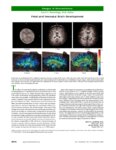 |
Gerig, Guido | Images in neuroscience: Fetal and Neonatal Brain Development | In the top row of longitudinal T1-weighted magnetic resonance images of the same child (and same scale), note the dramatic increase in total brain size as well as in white matter intensity over early development. In the bottom row of diffusion tensor images, white matter tractography of a neonate, o... | | 2006-01-01 |
| 7 |
 |
Gerig, Guido | Computational anatomy to assess longitudinal trajectory of brain growth | This paper addresses the challenging problem of statistics on images by describing average and variability. We describe computational anatomy tools for building 3-D and spatio-temporal 4-D atlases of volumetric image data. The method is based on the previously published concept of unbiased atlas bui... | | 2006-01-01 |
| 8 |
 |
Gerig, Guido | Reduced relationship to cortical white matter volume revealed by Tractography-based segmentation of the corpus callosum in young children with developmental delay | Objective: The corpus callosum is the primary anatomical substrate for inter-hemispheric communication, which is important for a range of adaptive and cognitive behaviors in early development. Previous studies that have measured the corpus callosum in developmental populations have been limited by t... | | 2006-01-01 |
| 9 |
 |
Gerig, Guido | Closed and open source neuroimage analysis tools and libraries at UNC | The emergence of open-source libraries and development tools in the last decade has changed the process of academic software development in many ways. In medical image processing and visualization this change is especially evident, also because open source projects are actively furthered by grant fu... | | 2006-01-01 |
| 10 |
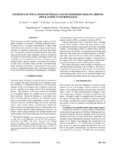 |
Gerig, Guido | Statistics of populations of images and its embedded objects: driving applications in neuroimaging | Work in progress towards modeling shape statistics of multi-object complexes is presented. Constraints defined by the set of objects such as a compact representation of object shape relationships and correlation of shape changes might have advantages for automatic segmentation and group discriminati... | | 2006-01-01 |
| 11 |
 |
Gerig, Guido | Correspondence evaluation in local shape analysis and structural subdivision | Regional volumetric and local shape analysis has become of increasing interest to the neuroimaging community due to the potential to locate morphological changes. In this paper we compare three common correspondence methods applied to two studies of hippocampal shape in schizophrenia: correspondence... | | 2007-01-01 |
| 12 |
 |
Gerig, Guido | Diffusion tensor imaging: application to the study of the developing brain | Objective: To provide an overview of diffusion tensor imaging (DTI) and its application to the study of white matter in the developing brain, in both healthy and clinical samples. Method: The development of DTI and its application to brain imaging of white matter tracts is discussed. 48 studies usi... | | 2007-01-01 |
| 13 |
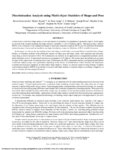 |
Gerig, Guido | Discrimination analysis using Multi-object statistics of shape and pose | A main focus of statistical shape analysis is the description of variability of a population of geometric objects. In this paper, we present work towards modeling the shape and pose variability of sets of multiple objects. Principal geodesic analysis (PGA) is the extension of the standard technique ... | | 2007-01-01 |
| 14 |
 |
Gerig, Guido | Early postnatal development of corpus callosum and corticospinal white matter assessed with quantitative tractography | BACKGROUND AND PURPOSE: The early postnatal period is perhaps the most dynamic phase of white matter development. We hypothesized that the early postnatal development of the corpus callosum and corticospinal tracts could be studied in unsedated healthy neonates by using novel approaches to diffusion... | | 2007-01-01 |
| 15 |
 |
Gerig, Guido | Population-based fitting of medial shape models with correspondence optimization | A crucial problem in statistical shape analysis is establishing the correspondence of shape features across a population. While many solutions are easy to express using boundary representations, this has been a considerable challenge for medial representations. This paper uses a new 3-D medial model... | | 2007-01-01 |
| 16 |
 |
Gerig, Guido | Regional gray matter growth, sexual dimorphism, and cerebral asymmetry in the Neonatal Brain | Although there has been recent interest in the study of childhood and adolescent brain development, very little is known about normal brain development in the first few months of life. In older children, there are regional differences in cortical gray matter development, whereas cortical gray and wh... | | 2007-01-01 |
| 17 |
 |
Gerig, Guido | Statistical shape analysis of Multi-Object complexes | An important goal of statistical shape analysis is the discrimination between populations of objects, exploring group differences in morphology not explained by standard volumetric analysis. Certain applications additionally require analysis of objects in their embedding context by joint statistical... | | 2007-01-01 |
| 18 |
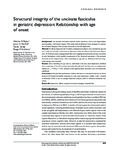 |
Gerig, Guido | Structural integrity of the uncinate fasciculus in geriatric depression: relationship with age of onset | Background: The uncinate fasciculus connects limbic structures, such as the hippocampus and amygdala, with frontal regions. This study utilized diffusion tensor imaging to examine the structural integrity of the uncinate fasciculus in late-life depression. Method: 18 elderly depressed and 19 elderly... | | 2007-01-01 |
| 19 |
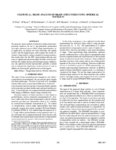 |
Gerig, Guido | Statistical shape analysis of brain structures using spherical wavelets | We present a novel method of statistical surface-based morphometry based on the use of non-parametric permutation tests and a spherical wavelet (SWC) shape representation. As an application, we analyze two brain structures, the caudate nucleus and the hippocampus, and compare the results obtained to... | | 2007-01-01 |
| 20 |
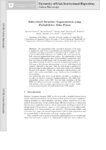 |
Gerig, Guido | Subcortical structure segmentation using probabilistic atlas priors | The segmentation of the subcortical structures of the brain is required for many forms of quantitative neuroanatomic analysis. The volumetric and shape parameters of structures such as caudate are employed to characterize a disease or its evolution. This paper presents our fully automatic segmentati... | | 2007-01-01 |
| 21 |
 |
Gerig, Guido | Noise-induced bias in low-direction diffusion tensor MRI: replication of Monte-Carlo simulation with in-vivo scans | Clinical neuroimaging studies involving diffusion tensor MRI (DTI) require precise estimation of diffusion properties for statistical analysis. Tensor derived measures such as fractional anisotropy (FA) and trace are often analyzed for hypothesis testing. Given the limited scanning time typically av... | | 2007-01-01 |
| 22 |
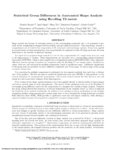 |
Gerig, Guido | Statistical group differences in anatomical shape analysis using Hotelling T2 Metric | Shape analysis has become of increasing interest to the neuroimaging community due to its potential to precisely locate morphological changes between healthy and pathological structures. This manuscript presents a comprehensive set of tools for the computation of 3D structural statistical shape anal... | | 2007-01-01 |
| 23 |
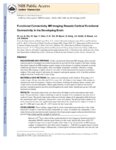 |
Gerig, Guido | Functional connectivity MR imaging reveals cortical functional connectivity in the developing brain | BACKGROUND AND PURPOSE: Unlike conventional functional MR imaging where external sensory/cognitive paradigms are needed to specifically activate different regions of the brain, resting functional connectivity MR imaging acquires images in the absence of cognitive demands (a resting condition) and de... | | 2008-01-01 |
| 24 |
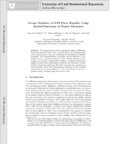 |
Gerig, Guido | Group statistics of DTI fiber bundles using spatial functions of tensor measures | We present a framework for hypothesis testing of differences between groups of DTI ber tracts. An anatomical, tract-oriented coordinate system provides a basis for estimating the distribution of diffusion properties. The parametrization of sampled, smooth functions is normalized across a population ... | | 2008-01-01 |
| 25 |
 |
Gerig, Guido | Multivariate longitudinal statistics for neonatal-pediatric brain tissue development | The topic of studying the growth of human brain development has become of increasing interest in the neuroimaging community. Cross-sectional studies may allow comparisons between means of different age groups, but they do not provide a growth model that integrates the continuum of time, nor do they ... | | 2008-01-01 |

























